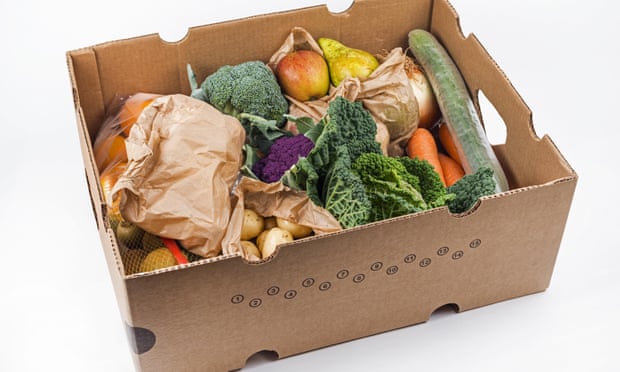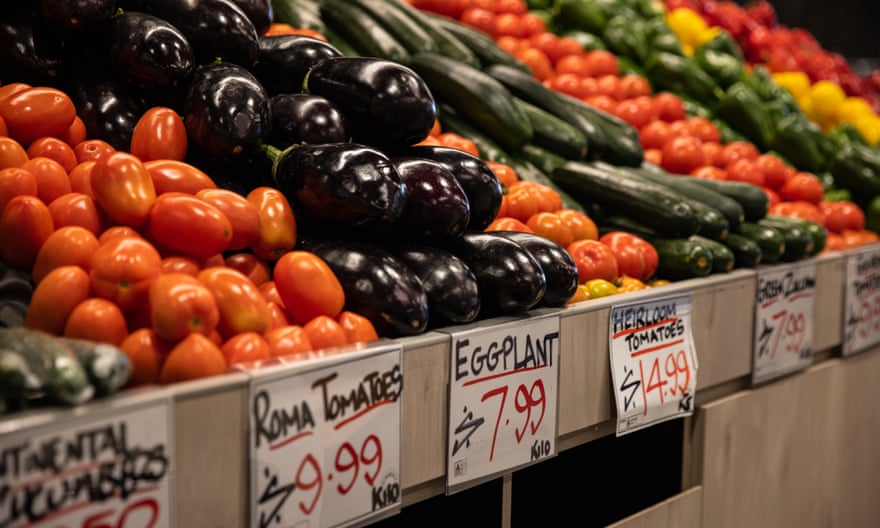
Food as medicine: could prescribing fruit and vegetables become part of healthcare? | Health
Emma’s variety 2 diabetic issues prognosis turned her existence upside down. “It is like owning a baby that under no circumstances grows up,” she claims. “It is nagging at you as before long as you wake up.” Each individual solitary morsel of foods has to be carefully preferred in situation it sends her blood sugar levels spiking, which could bring about her to move out or even worse.
The excellent diet program for an individual with Emma’s problem would involve lots of new fruit and veggies, wholegrains, nuts and seeds, lean meat and fish, and diminished-fats dairy. That diet regime has been revealed to gradual down or even reverse the progression of sort 2 diabetic issues and assist protect against it taking place in the to start with spot. But that has been a eating plan she has struggled to access.
What if this kind of a food plan could be prescribed in the exact same way as treatment, as a prescriptive intervention, subsidised by govt, easily offered and with a good deal of help and information, to aid prevent or deal with disease? The concept of “food as medicine” is getting traction all around the planet as scientists and medical doctors glance for ways to use food stuff in a specific manner to boost well being.
Balanced foods is not just critical for diabetes, claims Prof Jason Wu, a College of New South Wales nutrition epidemiologist and head of the diet science program at the George Institute for Global Health in Sydney. He claims quite a few of the “top killers” in western societies, from diabetic issues to cardiovascular ailment and some cancers, are linked to lifestyle “and diet plan is truly one particular of the big causes”.
A long time of strategies on healthful eating have failed to make a lot of a dent in Australia’s worsening costs of being overweight and form 2 diabetes. Wu and several other folks say the trouble is systemic obstacles – these as expense, availability, accessibility and training – that no total of general public wellbeing messaging advocating for healthier meal plans can prevail over.

Advocates consider greater targeted, supported and funded prescriptive approaches are desired and which is exactly where the idea of foods as medicine will come in. Wu and colleagues not too long ago conducted a analyze involving 50 persons with style 2 diabetes who have been getting it difficult to afford to pay for adequate food. The team were being “prescribed” a free of charge box of new fruit, greens, wholegrains, lean meats and dairy – delivered to their property just about every week. They also experienced frequent access to a dietician and had been offered recipes and suggestions on how to get ready healthy foods applying the substances.
Emma was a single of the study members. “I would open up up these bins and it was things that I hadn’t eaten in a lengthy time or points that I just did not consider ended up an choice,” she states. As an alternative of a burger for breakfast, she started feeding on fruit as an alternative of chips, she had nuts and seeds.
The review lasted only three months, but in that time the “produce prescriptions” designed a large improvement to diet program excellent and foods security for all those involved. And there were other unpredicted advantages: all round, the members confirmed improvements in their cholesterol degrees and dropped excess weight, and also ate fewer unhealthy foods.
The affordability trouble
Wu would like to see foodstuff as drugs grow to be an intrinsic portion of health care, in prevention and treatment method of ailment. It is not to suggest one particular can eat on their own out of terminal disease but foodstuff can have a strong outcome on wellbeing and some disease.
“The reason why we use food stuff as medication is for the reason that healthcare needs to shift,” he suggests. “Within healthcare by itself, balanced meals and honestly just healthy actual physical exercise does not get any where near ample focus it should get.”
He’s pushing for meals prescriptions to develop into subsidised and available in the same way as a pharmaceutical prescription. “We spend billions and billions of pounds every single year shelling out for remedies or paying out for surgeries that are basically downstream consequences of unhealthy eating plans,” Wu suggests. He states some of those healthcare pounds should be diverted to shell out for, or subsidise, proof-based healthy food items for people with these forms of life-style-connected health conditions and significantly those people who are currently encountering foods insecurity.
As properly as prevention – these as switching from processed carbs to wholegrains to stay clear of pre-diabetic issues creating into the full-blown illness – some experiments counsel food stuff prescriptions be utilized for people now afflicted by a illness. For instance, a modern study from the University of Newcastle uncovered a each day handful of almonds helped alleviate constipation in people with kidney condition undergoing the blood-filtering course of action haemodialysis.

Clare Collins, a diet and dietetics professor at the University of Newcastle, states she would like to see nutrition managed care ideas – similar to the psychological wellness procedure ideas at the moment subsidised by Medicare – that give people accessibility to dieticians and nutritionists who can aid prevail over at least some of the obstacles to balanced feeding on.
At the instant, a Medicare-subsidised continual disorder administration strategy – for administration of illnesses this sort of as style 2 diabetes – involves the selection of a single appointment with a dietitian as one particular of a huge range of allied well being pros out there for confined variety of subsidised appointments.
“If you definitely want to assistance anyone, completely modify the trajectory,” she states. “It’s not likely to be getting a single of five visits and a prescription it requirements that full assist structure.” Whilst Collins isn’t opposed to the thought of food prescriptions, she suggests it doesn’t go far plenty of in addressing the systemic boundaries that make it hard for people to take in a balanced diet.
Barriers can be as essential as kitchens. In acquiring their No Dollars No Time healthful feeding on website, Collins and her colleagues found out numerous persons did not even have the potential to properly prepare balanced food. Some only have just one shelf in a refrigerator, other folks have a benchtop kitchen only and some may only have a kettle, microwave or sandwich push. “Imagine an individual comes along with that type of condition and the health care provider suggests, ‘you go absent and take in a lot more vegetables and fruit’,” she claims.
A different barrier to implementing a foodstuff-as-drugs technique is the accessibility and affordability of healthier meals alone. Dr Kelly Lambert, a dietician specialising in kidney condition at the University of Wollongong, claims accessibility is a vexed difficulty. “We really don’t even will need to be imagining about remote communities it could just be downtown Dubbo for instance, where by I know that is a genuine situation,” she claims.
Affordability of clean generate was difficult even before the current charge of residing crisis. Lambert highlights this kind of initiatives as the Supplemental Diet Help Program in the US, which supplies subsidised access to healthy food stuff – in the variety of a card that can be made use of to acquire meals at unique shops and supermarkets – for minimal-income homes and persons, two-thirds of whom are people with kids. Philanthropic organisations these types of as the Rockefeller Foundation are putting income into addressing this much too. The foundation has not too long ago fully commited US$105m about a few decades to “increase accessibility to balanced and sustainable food items for 40 million underserved persons about the globe”.
“They’re a little bit even further ahead than us in terms of applying this food items-as-medication principle and giving nutritious foods and groceries to specifically disadvantaged communities,” Lambert says. She would like to see these ways aimed at Australians with well being conditions this sort of as kind 2 diabetic issues and high blood tension, and these who are chubby or obese, “because these 3 big health conditions drive the vast majority of continual illness in Australia”.
The easiest technique would be to subsidise access to fresh vegetables. “[Vegetables] have this kind of a highly effective impact from a overall health point of view, still there is these kinds of a common notion that they are unaffordable – and these days they most likely are in some communities,” Lambert says.
Because the UNSW study ended, Emma has been lacking it – especially when something as straightforward as a lettuce grew to become unaffordable. “I actually skip all those primary things – I miss broccoli, cauliflower, all of that,” she claims. She has reverted to some of her previous “stodgy” foodstuff, mainly because they are more cost-effective.
These weekly deliveries aided her control her diabetes and improved her insomnia. “It sounds so cliched, but definitely it was night time and day,” Emma suggests. “I took it as a present.”
You May Also Like

Brian Schmitz: Physical Therapist | Summit Health and Fitness
April 23, 2023
Schools sue social media companies over youth mental health crisis
March 19, 2023


